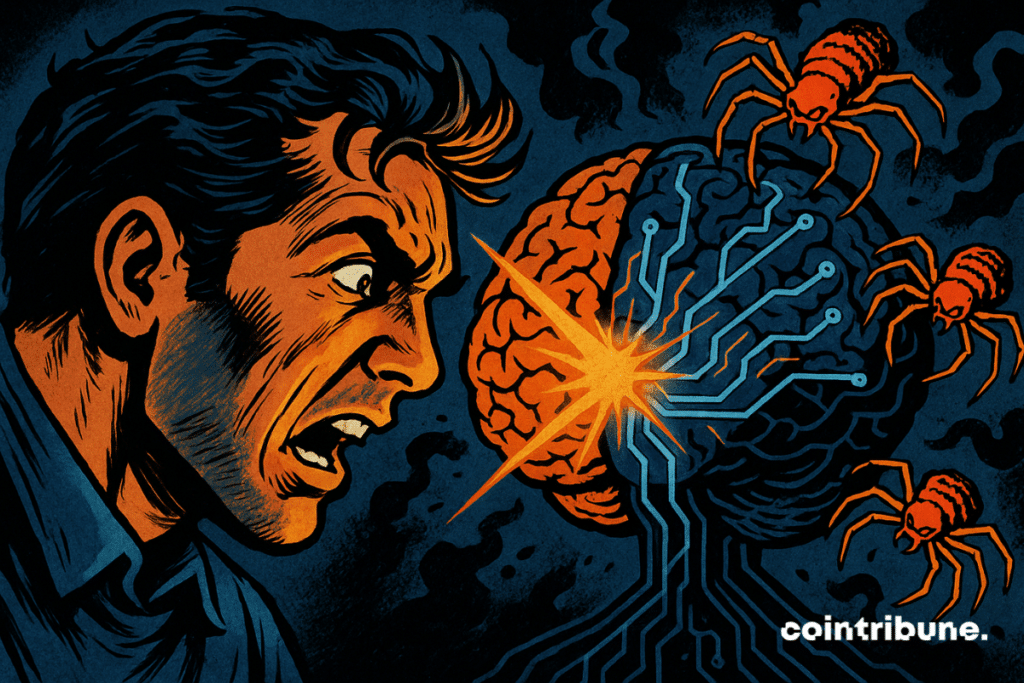Naoris Protocol: The Quantum-Resistant Shield Web3 Has Been Waiting For
Web3's security backbone just got a quantum upgrade—and none too soon.
As classical encryption crumbles under the looming threat of quantum computing, Naoris Protocol deploys blockchain's first line of post-quantum defense. This isn't theoretical futurism—it's a cryptographic arms race where the first mover survives.
The architecture: A decentralized cyber-mesh that turns every node into a security checkpoint. No single point of failure, no honeypots for hackers—just Byzantine fault tolerance meeting quantum resistance.
Timing couldn't be sharper. With $12B lost to Web3 hacks last year (thanks largely to reused private keys and lazy devs), the industry's 'move fast and break things' ethos finally meets its match: math that even quantum brute force can't crack.
Will it work? The protocol's already stress-tested against Shor's algorithm attacks—because nothing says 'enterprise-ready' like surviving a simulated quantum apocalypse.
One hedge fund CTO quipped: 'Finally, a use case for blockchain that doesn't involve monkey JPEGs or yield farming vaporware.' The barb stings because it's true.

In Brief
- Naoris Protocol protects Web3 with decentralized post-quantum cybersecurity.
- Its testnet has already processed over 80 million transactions and blocked 392 million threats.
- The launch of the $NAORIS token is planned for July 2025, with rewards for testers.
The Quantum Clock is Ticking
Web3’s promise of decentralization and user sovereignty remains under siege. Traditional security models, built for Web2’s centralized architecture, crumble when applied to blockchain’s distributed nature. Meanwhile, quantum computers (no longer a distant theoretical threat) are advancing rapidly toward “Q-Day“, the moment when they’ll break the cryptographic foundations securing today’s digital assets.
Naoris Protocol recognized this convergence of immediate and future threats, launching its Decentralized Physical Infrastructure Network (DePIN) testnet in early 2025. The results demonstrate both the scale of the problem and the potential of the solution:
- 80+ million post-quantum transactions processed
- 2.8 million secure wallets created
- 900,000+ distributed security nodes deployed
- 392 million threats neutralized in real-time
These aren’t just impressive numbers. They represent a fundamental shift toward proactive, decentralized cybersecurity that scales with Web3’s growth.
Beyond Traditional Anti-Phishing: A Multi-Layered Defense
Quantum-Resistant Transaction Security
At Naoris Protocol’s Core lies Dilithium-5 post-quantum cryptography, creating an unbreakable signature system that will remain secure even after quantum computers achieve cryptographic relevance. This isn’t just future-proofing. It’s addressing today’s sophisticated phishing techniques like ice phishing and malicious transaction approvals.
The protocol’s transaction simulation LAYER provides users with crystal-clear previews of exactly what they’re authorizing, eliminating the guesswork that phishers exploit. Users see the real consequences of their actions before committing, not after it’s too late.
Distributed Browser Security Network
Every device running Naoris becomes part of a collective defense mesh. Browser security nodes continuously analyze web traffic, identifying malicious scripts and blocking suspicious URLs before users encounter them. This distributed approach means attackers can’t simply compromise a single security provider. They’d need to overwhelm the entire network.
→ See the official knowledge base
Products coming… : neutralizing risks #2 & #3
Naoris isn’t stopping at phishing. Two major initiatives are underway to address other critical vulnerabilities:
- Wallet/Private Key Compromise: The protocol is developing sandboxing solutions, adaptive multisig, and encrypted backups to prevent key theft;
- Smart Contract Vulnerabilities: Naoris is building automated auditing tools, UX alerts for suspicious contracts, and a dApp rating system based on integrity.
These innovations will complement the SubZero infrastructure and strengthen the resilience of Web3 ecosystems. → See technical documentation for details
TGE focus end-July 2025
The $NAORIS token powers Naoris’ post-quantum infrastructure. It enables:
- Decentralized validation (Proof of Security);
- Access to cybersecurity services such as anomaly detection and compliance checks;
- Node staking and protocol governance;
- Cross-chain usage in compatible ecosystems.
The TGE is scheduled for mid-July 2025 (internal confirmation, public window Q2 2025). Joining the community today allows users to earn points on the testnet and prepare for the event.
In a still-vulnerable Web3, Naoris Protocol is deploying a truly decentralized trust architecture. Its post-quantum testnet proves that protecting users is not only possible—it’s already happening. Phishing, wallet hacks, and smart contract exploits should no longer be considered inevitable.
Get Started:
→ Try the testnet
→ Join the Discord
→ Follow Naoris on X (Twitter)
→ Visit the official website
Maximize your Cointribune experience with our "Read to Earn" program! For every article you read, earn points and access exclusive rewards. Sign up now and start earning benefits.

